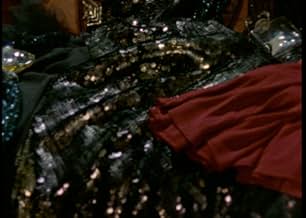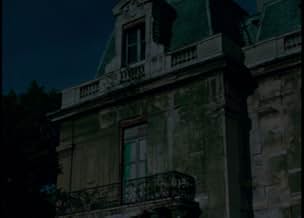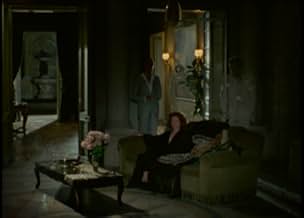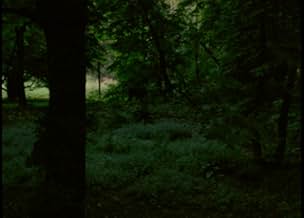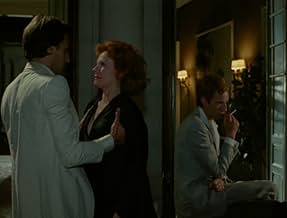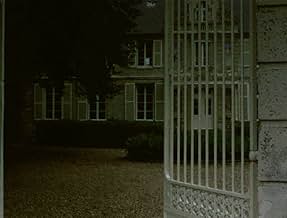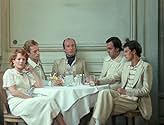AVALIAÇÃO DA IMDb
6,1/10
2,8 mil
SUA AVALIAÇÃO
Anne-Marie Stretter, esposa de um diplomata francês, vive na Índia dos anos 30. Ela leva muitos amantes à medida que os sistemas de opressão declinam ao seu redor.Anne-Marie Stretter, esposa de um diplomata francês, vive na Índia dos anos 30. Ela leva muitos amantes à medida que os sistemas de opressão declinam ao seu redor.Anne-Marie Stretter, esposa de um diplomata francês, vive na Índia dos anos 30. Ela leva muitos amantes à medida que os sistemas de opressão declinam ao seu redor.
- Direção
- Roteirista
- Artistas
- Prêmios
- 3 indicações no total
Michael Lonsdale
- Le vice-consul de Lahore
- (as Michel Lonsdale)
Satasinh Manila
- Voix de la mendiante
- (narração)
Nicole Hiss
- Voix intemporelle
- (narração)
Monique Simonet
- Voix intemporelle
- (narração)
Viviane Forrester
- Voix intemporelle
- (narração)
Dionys Mascolo
- Voix intemporelle
- (narração)
Marguerite Duras
- Voix intemporelle
- (narração)
Françoise Lebrun
- Voix de la réception
- (narração)
Benoît Jacquot
- Voix de la réception
- (narração)
Nicole-Lise Bernheim
- Voix de la réception
- (narração)
- (as Nicole Lise Bernheim)
Kevork Kutudjan
- Voix de la réception
- (narração)
Daniel Dobbels
- Voix de la réception
- (narração)
Avaliações em destaque
I was taken aback at first - the complete absence of spoken dialogue from the cast was a bit unnerving - instead, the film consists of two strands, visual and aural. Visually, the film is slow, languorous and visually sensual. It is almost a 'silent' film. Aurally, the film consists of voices over, providing not so much a narrative as recollections. The voices over (not being a fluent French speaker I had to rely on sub-titles) are telling a story of events that happened in the past whilst the cast act out the events as though they are the ghosts of the buildings in which the events were played out. But there is a story - of a woman married to a French diplomat, living for the time being in Calcutta, who takes lovers to relieve the tedious boredom of social niceties (and the heat, dust and flies). This story is punctuated by one scene in which someone who has fallen in love with her makes his feelings known to her and then, betraying the norms of his society, declares his feelings and his despair, by getting emotional about it - very emotional. I was transfixed. Fortunately, I watched it on DVD having recorded it from BBC4 - so I've got it to watch again, as I shall most certainly do.
This film was a real surprise when I discovered it in the early '90s and it became one of my favorites. I enjoyed the general slow pace of the film, its dreaminess and yet its inner violence.It's exactly what I imagine tropical climates do to influence your mood .In the same vein Marguerite Duras made "L' Amant ", a semi autobiographical film.
Anyway, you CAN find the video VHS-SECAM . I "stumbled" on it in a bookshop in Montpellier a couple of years ago. Here are the details :
India SONG Ecrit par Marguerite Duras
Entretiens Dominique Noguez Réalisation Jérôme Beaujour et Jean Mascolo Benoît Jacob Vidéo 2001
Anyway, you CAN find the video VHS-SECAM . I "stumbled" on it in a bookshop in Montpellier a couple of years ago. Here are the details :
India SONG Ecrit par Marguerite Duras
Entretiens Dominique Noguez Réalisation Jérôme Beaujour et Jean Mascolo Benoît Jacob Vidéo 2001
If you're looking for a typical movie India Song is definitely not for you. The highly experimental movie is both long and smashes a lot of the rules for conventional cinema. It teaches YOU how to watch IT.
The plot, such as it is, is about the wife of a French Ambassador living in Calcutta. Bored she engages in a series of love affairs. This information is provided completely in narration that plays over a series of ghost like images in which we see the ambassador's wife dance and walk and flirt with a handful of other people in a mostly empty and abandoned looking mansion. It's essentially a ghost story.
I have nothing against slow films or unconventional ones but this simply wasn't for me. Delphine Seyrig acts out the part of Anne- Marie Stretter, the wife, but watching her I was reminded of that OTHER famous movie she did in 1975, also experimental and unconventional and also directed by a woman who was a cinematic powerhouse: Chantal Akerman. In terms of plot there's not a lot to tie Chantal Akerman's Jeanne Dielmann to Marguerite Duras' India Song, but the two feature a similar style of long shots and repetition. That said I find Jeanne Dielmann by far the easier of the two to watch. While that movie is hypnotizing and entrancing Duras' movie feels stale, like a book of hers that was never quite able to come to fruition.
A movie that perhaps only Duras devotees or Seyrig fans will love.
The plot, such as it is, is about the wife of a French Ambassador living in Calcutta. Bored she engages in a series of love affairs. This information is provided completely in narration that plays over a series of ghost like images in which we see the ambassador's wife dance and walk and flirt with a handful of other people in a mostly empty and abandoned looking mansion. It's essentially a ghost story.
I have nothing against slow films or unconventional ones but this simply wasn't for me. Delphine Seyrig acts out the part of Anne- Marie Stretter, the wife, but watching her I was reminded of that OTHER famous movie she did in 1975, also experimental and unconventional and also directed by a woman who was a cinematic powerhouse: Chantal Akerman. In terms of plot there's not a lot to tie Chantal Akerman's Jeanne Dielmann to Marguerite Duras' India Song, but the two feature a similar style of long shots and repetition. That said I find Jeanne Dielmann by far the easier of the two to watch. While that movie is hypnotizing and entrancing Duras' movie feels stale, like a book of hers that was never quite able to come to fruition.
A movie that perhaps only Duras devotees or Seyrig fans will love.
Duras is a good writer, but a terrible film maker. When you watch one of her movies - and I have imposed a few to myself - you know you will watch somethings that has some interesting ideas, but that lacks any movie making skill.
This film which is supposed to take place in India, but which was filmed in France, does good efforts for a virtually no-budget film. I love the opening scene, and the silent, narrative atmosphere led me into thinking this would be a good film for about 15-20 minutes.
The main problem is that it gets old quick. at first it's a bit captivating, some original way to make a movie, etc. After 20 minutes you just want anything to happen, you want it to be well filmed, you would like the actors to do more than what a wax figure could do. After an hour and a half I wanted to shoot myself. You need some guts to finish this film, if you want my opinion, mostly because of how long it is, but also because of how bland it gets.
This film which is supposed to take place in India, but which was filmed in France, does good efforts for a virtually no-budget film. I love the opening scene, and the silent, narrative atmosphere led me into thinking this would be a good film for about 15-20 minutes.
The main problem is that it gets old quick. at first it's a bit captivating, some original way to make a movie, etc. After 20 minutes you just want anything to happen, you want it to be well filmed, you would like the actors to do more than what a wax figure could do. After an hour and a half I wanted to shoot myself. You need some guts to finish this film, if you want my opinion, mostly because of how long it is, but also because of how bland it gets.
'India Song' written and directed in 1975 by Marguerite Duras can be either a mesmerizing or a painful cinematic experience. The French writer whose literary work largely reflected her life experience in Asia and her fascination with this continent has directed a number of films that bring to the screen or are inspired by her books. This is the case with 'India Song', which is probably one of her most extreme films to experiment with. The result is in this case a film that bears little resemblance to the films of the era in which it was created, being closer to what we call 'video art' today. Many viewers will probably not be able to overcome the barriers raised intentionally by the author and will abandon the viewing before the end or will complain about the wasted time if they resisted to the end. A few others will be excited. I confess that I was somewhere in the middle. I had a hard time watching. I didn't like the film, but I think that I understood why the author took the chosen creative paths that she took and why a minority of viewers have a good chance to like it.
There is a story in this film, but it is not what is happening that is central but the way the story is told. Anne-Marie Streyter (Delphine Seyrig), who is born in Indochina (same as the writer and director of the film), is the wife of the French ambassador accredited in Calcutta. Her life takes place in an atmosphere of boredom and decadence, sprinkled with extramarital affairs with young lovers, an attitude also attributed to Duras in her own private life. The only dissonant event would be the hopeless advances of the consul in Lahore (Michael Lonsdale) in love with the heroine, which when rejected will bring him despair. The set and the surrounding nature suggest the physical and moral erosion of the colonial way of life at its historical twilight. The echoes of the tragic events that were taking place in those years in different parts of the planet hardly reach this world suspended between dream and history, but the imminence of the tragedy is clear.
Viewers who dare to watch this film must be warned that they will witness a cinematic experience that is different than the usual. The long and slow frames have a beauty of paintings, and in them the characters move slowly, as if they want to freeze time in place. The heroes do not speak to each other, we rather have the feeling that we are visiting an art exhibition accompanied by a rich text, read off-screen, which replaces the interactions between the characters but also part of their feelings. The actors are merely silhouettes, they play their roles in kind of an almost frozen mimicry. I give a special mention to the performance of Michael Lonsdale, who is said to consider the consul in Lahore his favorite role. The filming was not done in India, but near Paris, in one of the mansions abandoned by the Rothschild family during World War II and since then fallen into ruin. The local color is therefore not the authentic one, but the one imagined by the author. The music, very appropriate, is stylish and obsessive. 'India Song' is a beautiful film, the atmosphere is dreamy, but the excess of method makes it difficult to watch. Most spectators, if they resist, will sooner or later look for the fast-forward button.
There is a story in this film, but it is not what is happening that is central but the way the story is told. Anne-Marie Streyter (Delphine Seyrig), who is born in Indochina (same as the writer and director of the film), is the wife of the French ambassador accredited in Calcutta. Her life takes place in an atmosphere of boredom and decadence, sprinkled with extramarital affairs with young lovers, an attitude also attributed to Duras in her own private life. The only dissonant event would be the hopeless advances of the consul in Lahore (Michael Lonsdale) in love with the heroine, which when rejected will bring him despair. The set and the surrounding nature suggest the physical and moral erosion of the colonial way of life at its historical twilight. The echoes of the tragic events that were taking place in those years in different parts of the planet hardly reach this world suspended between dream and history, but the imminence of the tragedy is clear.
Viewers who dare to watch this film must be warned that they will witness a cinematic experience that is different than the usual. The long and slow frames have a beauty of paintings, and in them the characters move slowly, as if they want to freeze time in place. The heroes do not speak to each other, we rather have the feeling that we are visiting an art exhibition accompanied by a rich text, read off-screen, which replaces the interactions between the characters but also part of their feelings. The actors are merely silhouettes, they play their roles in kind of an almost frozen mimicry. I give a special mention to the performance of Michael Lonsdale, who is said to consider the consul in Lahore his favorite role. The filming was not done in India, but near Paris, in one of the mansions abandoned by the Rothschild family during World War II and since then fallen into ruin. The local color is therefore not the authentic one, but the one imagined by the author. The music, very appropriate, is stylish and obsessive. 'India Song' is a beautiful film, the atmosphere is dreamy, but the excess of method makes it difficult to watch. Most spectators, if they resist, will sooner or later look for the fast-forward button.
Você sabia?
- CuriosidadesDominique Sanda was the first choice for the leading role, but dropped out and was replaced by Delphine Seyrig.
- ConexõesEdited into Passage des arts: Marguerite Duras, l'écriture et la vie (2021)
Principais escolhas
Faça login para avaliar e ver a lista de recomendações personalizadas
- How long is India Song?Fornecido pela Alexa
Detalhes
- Data de lançamento
- País de origem
- Central de atendimento oficial
- Idioma
- Também conhecido como
- 印度之歌
- Locações de filme
- Empresas de produção
- Consulte mais créditos da empresa na IMDbPro
Bilheteria
- Orçamento
- FRF 254.542 (estimativa)
- Faturamento bruto mundial
- US$ 9.308
Contribua para esta página
Sugerir uma alteração ou adicionar conteúdo ausente


